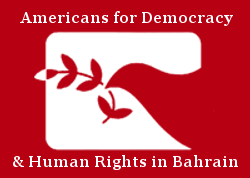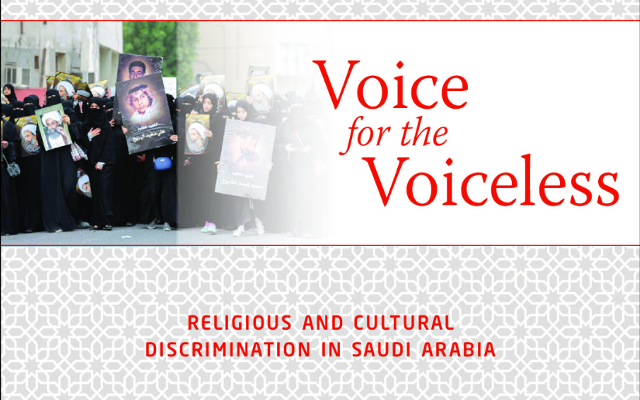Americans for Democracy & Human Rights in Bahrain (ADHRB) in conjunction with the Bahrain Institute for Rights and Democracy (BIRD) is pleased to announce the release of our new report, Voice for the Voiceless: Religious and Cultural Discrimination in Saudi Arabia. For a summary of the report, see below. For the full report, click here.
Shia Muslims in Saudi Arabia have been the victims of systematic government abuse and discrimination since before the establishment of the kingdom in 1933. The abuse and discrimination is enshrined in Saudi Arabia’s ideology and has continued in the practices of the modern Saudi state. Among these practices is the state-sponsored destruction of Shia places of worship and vandalism of Shia graves and mausoleums. The state’s ideology also encourages targeted, physical attacks on Shia worshippers, particularly during Ashura celebrations. Government-appointed justices violate Shia defendants’ internationally-sanctioned right to due process and often subject them to pre-trial torture, unfair trials, and execution. School textbooks teach that Shia Islam is not a true form of Islam and that Shia Muslims are unbelievers, while teachers degrade and insult their Shia students in class. Many corporations use discriminatory hiring and promotion practices to prevent Shia employees from ascending to senior positions. The country’s political system excludes Shia citizens from influential posts and concentrates power in the hands of the royal family and a few Sunni politicians. These practices are not isolated incidents, but are products of legislation and social norms that work to keep Saudi Shia Muslims in subordinate positions throughout the kingdom.
In order to explicate the historic and structural nature of Shia discrimination in Saudi Arabia, this report first answers the question, “Why Shia?” in an attempt to discover the reason behind the state’s policies towards its Shia population. As anti-Shia prejudice did not arise in a vacuum, this report incorporates a historical perspective that aims to trace the particular set of circumstances that gave birth to, and underpins, bias against Shia.
To this end, the first section examines Muhammad ibn abd al-Wahhab and his understanding of Sunni Islam, because his beliefs and teachings are the foundation for contemporary patterns of bias in Saudi Arabia. The following sections examine discrimination in the religious and cultural, legal, political, and media spheres respectively. Like the report as a whole, these sections examine historic patterns of discrimination against Shia in addition to contemporary examples of prejudice. While these sections focus on the situations and experiences of Shia in the east, they also detail patterns of intolerance towards Ismailis in Najran. The purpose of this is not only to demonstrate that contemporary examples of prejudice arose in the context of changing times, attitudes, and political and social changes, but also to illustrate that Shia throughout the country face widespread systemic discrimination. The report asserts that examining contemporary patterns of bias without examining historic patterns would not tell the whole story.
The final section of the report explores the life and legacy of Sheikh Nimr al-Nimr in the context of anti-Shia discrimination in many aspects of Saudi society. It uses several of his sermons to illustrate his non-violent stance and opposition to all government oppression regardless of sect. The section demonstrates that Sheikh al-Nimr was a transformative figure among Saudi Arabia’s Shia residents, particularly in the Eastern Province due to his forthright demand for equal rights for Saudi Arabia’s Shia populace.





